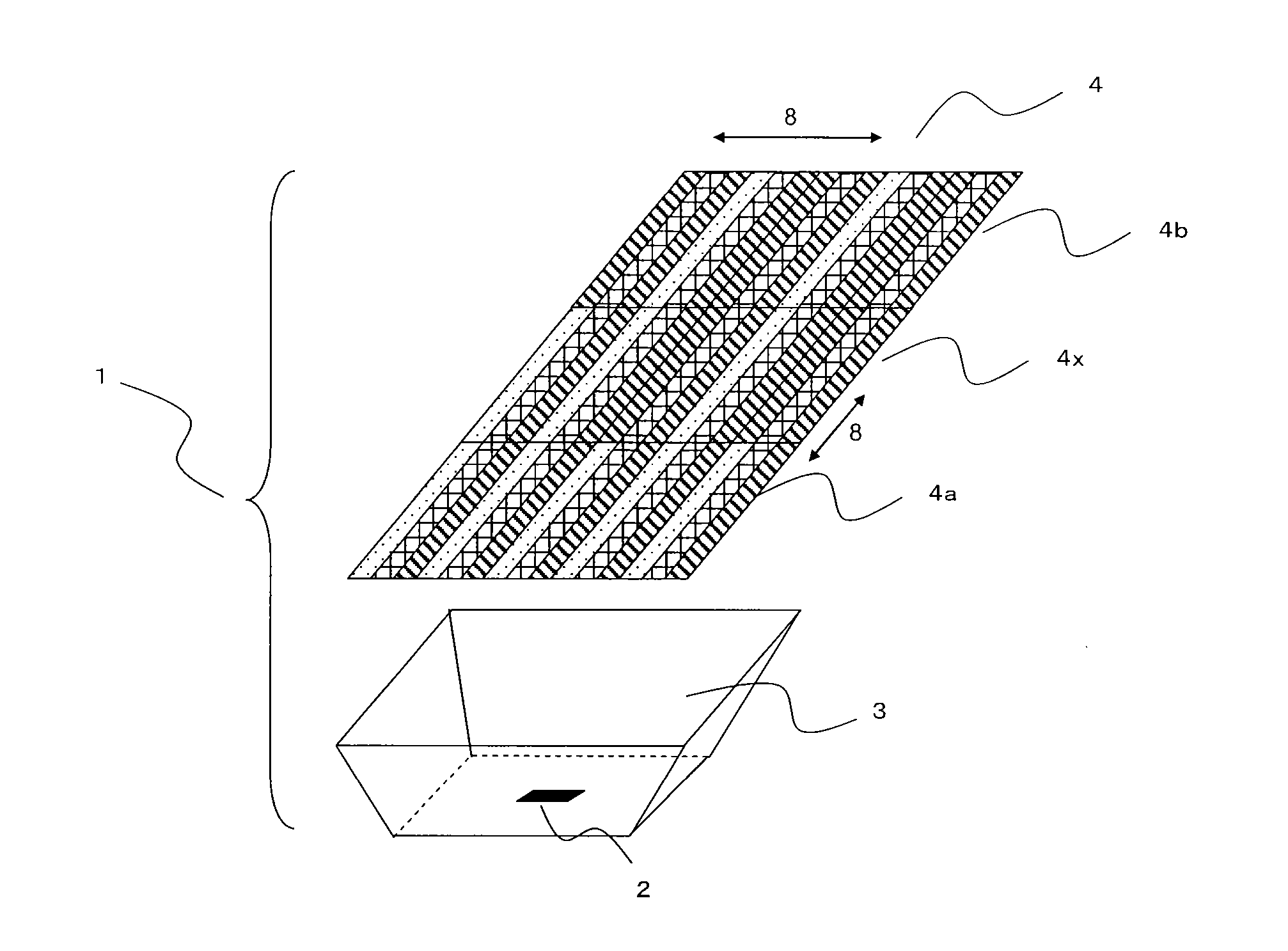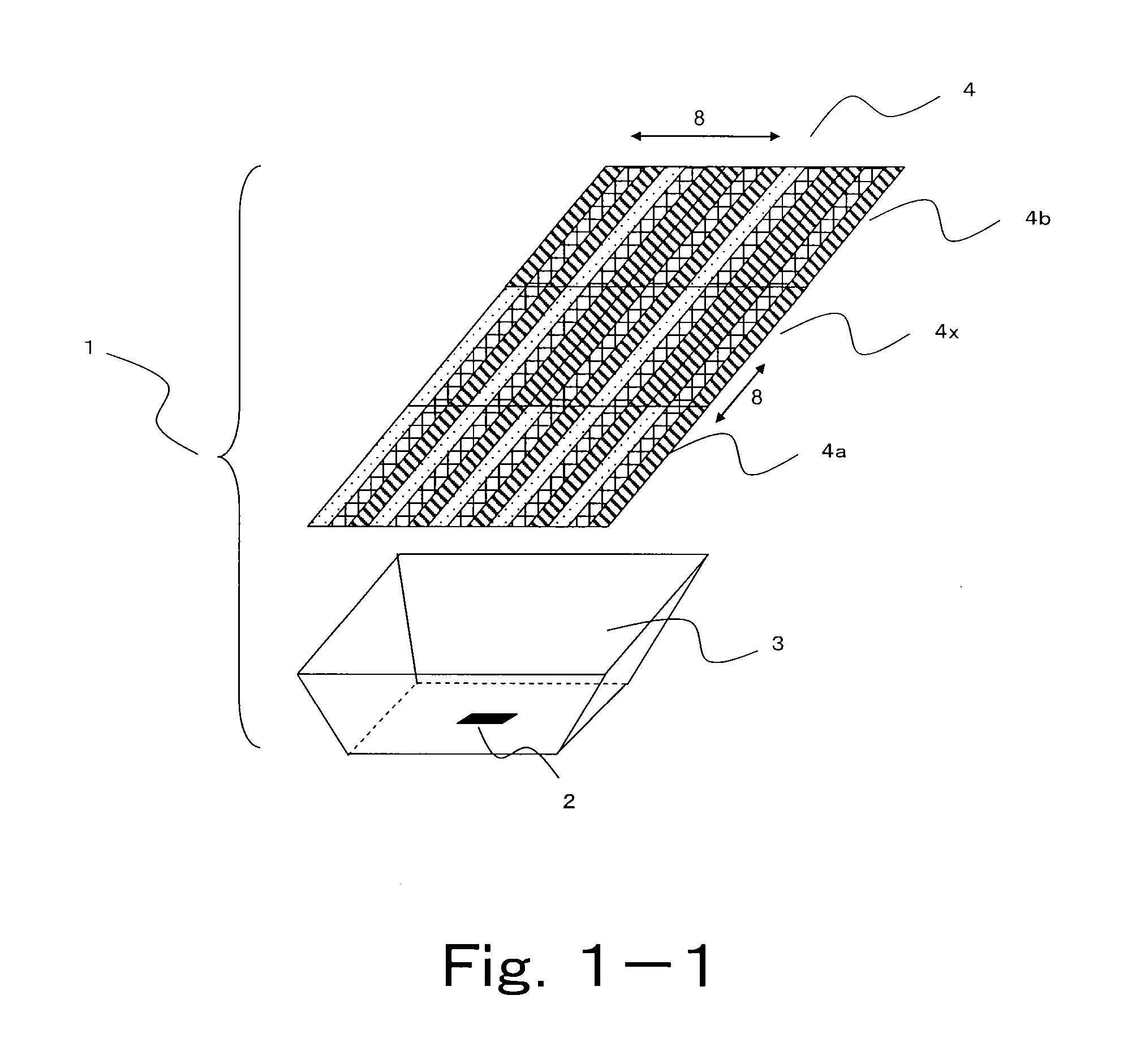Light emitting device
a technology of light emitting device and light emitting element, which is applied in the direction of semiconductor devices for light sources, point-like light sources, lighting and heating apparatus, etc., can solve the problems of not economically viable, changing the color temperature of the emission color of the light emitting device which uses a semiconductor light emitting element is relatively expensive in comparison with a fluorescent lamp, so as to achieve the effect of simple color temperature adjustment, simple emission spectrum adjustment, and superior emission efficiency
- Summary
- Abstract
- Description
- Claims
- Application Information
AI Technical Summary
Benefits of technology
Problems solved by technology
Method used
Image
Examples
second embodiment
[0305]A second embodiment will be described next. FIG. 23 serves to schematically show an axis orthogonal cross section of a light emitting device 11 according to a second embodiment. Here, the focus of the description will be on points of difference from the configuration of the first embodiment (the cross sectional structure shown in FIG. 17 in particular) and points in common will not be described here. In this embodiment, the housing member 14 comprises a phosphor layer 141 formed on the inner peripheral side of the transparent base material. Meanwhile, a bandpass filter (so-called ultraviolet cut filter) 15 which reflects the light (excitation light) emitted by the light emitting diode 12 and transmits the light emitted by each of the phosphors contained in the phosphor layer 141 is provided on the outer peripheral side of the transparent base material. A commercially available bandpass filter can be suitably used as the bandpass filter 15, and the type of the bandpass filter 1...
third embodiment
[0310]A third embodiment will be described next. FIGS. 25A and 25B serves to schematically show an axis orthogonal cross section of the light emitting device 11 according to the third embodiment. Here, the focus of the description will be the characteristics of this embodiment. In this embodiment, the light emitting diode 12 is disposed on both faces of the substrate 13 such that the substrate 13 is held from both sides. Here, the light emitting diode 12 mounted on the lower face of the substrate 13 is called the “first light emitting diode 12a” and the light emitting diode 12 mounted on the upper face is called the “second light emitting diode 12b”.
[0311]As is illustrated, the first light emitting diode 12a and the second light emitting diode 12b are disposed at the back with the substrate 13 held from both sides. Hence, the irradiation center direction Dc of the first light emitting diode 12a is oriented vertically downward with reference to the substrate 13 and the irradiation c...
fourth embodiment
[0314]A fourth embodiment will be described next. FIG. 26 schematically shows an axis orthogonal face of the light emitting device 11 according to a fourth embodiment. Here, the description will focus on the characteristics of this embodiment. Similarly to the first embodiment and so on, the light emitting device 11 according to this embodiment has a light emitting diode 12 mounted only on the lower face of the substrate 13. Here, in the space where the housing member 14 is housed, the space opposite the upper face of the substrate 13 is called the “power source back side space.”
[0315]A heat radiation fin 18 for radiating the heat of the light emitting diode 12 is disposed in thermal contact with the upper face of the substrate 13 in the foregoing light source back side space SNL. The material values of the substrate 13 such as thermal conductivity are adjusted so that the heat emitted by the light emitting diode 12 is efficiently conducted to the heat radiation fin 18. Note that ea...
PUM
 Login to View More
Login to View More Abstract
Description
Claims
Application Information
 Login to View More
Login to View More - R&D
- Intellectual Property
- Life Sciences
- Materials
- Tech Scout
- Unparalleled Data Quality
- Higher Quality Content
- 60% Fewer Hallucinations
Browse by: Latest US Patents, China's latest patents, Technical Efficacy Thesaurus, Application Domain, Technology Topic, Popular Technical Reports.
© 2025 PatSnap. All rights reserved.Legal|Privacy policy|Modern Slavery Act Transparency Statement|Sitemap|About US| Contact US: help@patsnap.com



